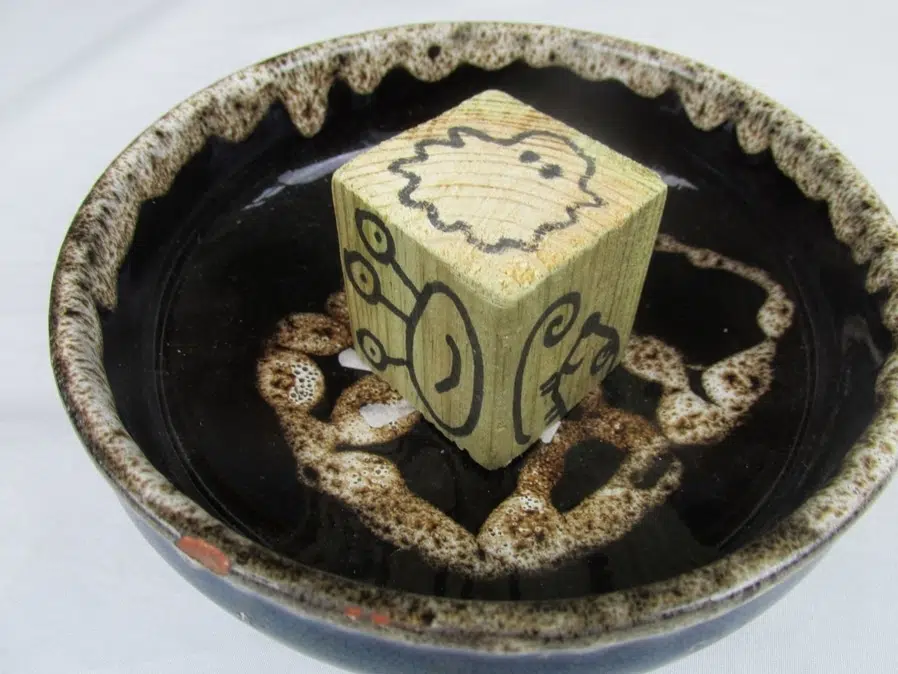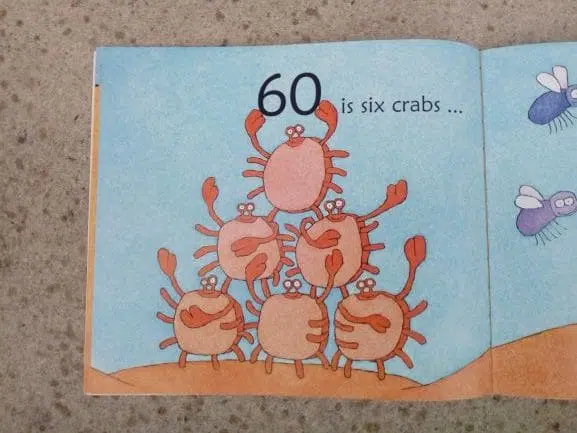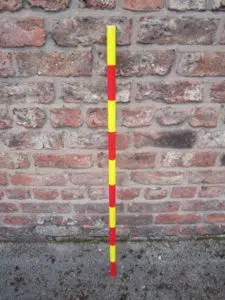Counting by 10s is a really important skill in life. To teach children this skill in the fastest and most effective way, it is wise to go through three phases.
Put simply, start with the easiest activities where children are being introduced to rote counting in tens.
Then move on to activities where children are seeing the numbers, as well as saying them. In this phase, they are practicing the skill.
The third phase is to start thinking in tens. This is helping children to apply their ability to count by tens, and link it to practical situations.
In almost twelve years of teaching young children, I have found this plan is the best to follow, and I have also found that there are many activities that are the most effective in teaching this skill.
I have picked the best 19 activities I have ever done to teach counting by 10s for this article.
They are:
| Beginning/Introducing | Count Marching |
| Action Counting | |
| Rote Counting | |
| Dance Counting | |
| Online Songs | |
| Count In Different Voices | |
| Practising Counting By 10s | Board Games |
| Introduce A Number Line | |
| Ordering Objects In 10s | |
| Ordering Number Stones | |
| Jump In Tens | |
| Outdoor Number Tracks | |
| Applying The Skill Of Counting by 10s | Apply The Skill In Picture Books |
| Putting Gloves On Clothes Lines | |
| Counting Groups Of Children | |
| Use A Counting Stick | |
| Start From A Number Not Ten | |
| Chanting Forwards/Backwards | |
| Hit The Balloon Team Game |
Our number system is based around the number ten, mainly because we have ten fingers.
Being able to think and calculate in tens has many benefits such as being useful for mental addition and subtraction, estimating, problem solving, and many other things. (Source)
Counting by 10s is fun! And children will enjoy these games, as well as making lots of progress from them.
I have split this article up into the three levels of difficulty – beginnings, medium difficulty, and then applying the skill.
OK, let’s get started…

Introducing – Beginning To Count By 10s
In these first games, children are being introduced to the concept of counting in tens, and doing rote counting. This is simply counting without objects, or visuals – just saying the numbers in order. (If you’re not sure what rote counting is, check this out first).
1. Count Marching
Getting as active as possible is definitely the way to go with these rote counting games, and so we’ll kick off with a really physical game.
Get the children up and marching on the spot.
As one foot hits the ground, all say ‘ten.’
Then ‘twenty’ when the next foot lands.
Keep going like this. It’s a good a idea to do the march quite slowly when you begin, but you can speed up to a normal marching pace when the children start to get good at chanting in tens.
A note – I always go past 100, even if you just go to 110. Lots of children think the numbers stop at 100, so try to avoid this trap!
2. Action Counting
This is a similar physical idea to the march counting, and a nice way to start.
Simply pick some kind of movement, and all start doing it together.
It could be:
- Jumping
- Stretching up
- Stretch to one side, then the other
- Hopping
Anything else like that would be great as well. Simply do an action whilst saying ‘ten’. Then do it again, saying ‘twenty’ and so on.
Keep going moving and counting
3. Rote Counting
Here’s just a simple activity, that only takes a few moments, and so can be thrown in throughout the day.
This is quite simply sitting down together, and chanting the numbers from 10 up to beyond 100.
Super simple – but it takes a bit of this, to bring the other games to life.
4. Dance Counting
Mixing dance with counting is a great plan, and great for engagement and getting the children excited.
Put some kind of pumping dance tune on. It’s good to use some kind of pop song without any words, if you can find one. Here’s one you can use for youtube, that the children love:
Put the pumping tune on, and then choose some kind of dance move.
It could be something simple like put both arms out to the right, then both to the left. Or reach up, then down, up, then down.
Do this to the music, and then start to count by tens!
Once again, try to go past 100.
Then pick a different dance move, and repeat the process again. Repeat with different dance moves, always counting up in tens.
5. Online Songs
There are several free songs on youtube that are fantastic for counting by tens, and that children really enjoy.
One that my children liked was this one:
6. Counting In Different Voices
This is a great way of engaging harder to reach learners, or children that are just not very interested in counting.
I use a dice for this, that looks like this:

However, this is not essential. This dice is a wooden building block that I have drawn six characters on. The characters are (though this is not set in stone):
- A princess
- A robot
- An alien
- A tiger
- A mouse
- A ghost
What you do, is roll the dice, and see which character it lands on. For example, it might land on the ghost.
Everyone is going to use their best ghost voice whilst chanting in tens!
Then, ask another child to roll the dice, and whatever character you get, try to use that voice.
This game is fun, has a level of imagination and role play in it, as well as practising counting.
Practising The Skill Of Counting By 10s
When children have got good at rote counting a sequence of numbers, it is time to introduce looking at visual numbers at the same time.
It is good to introduce number lines in a range of different contexts. These could be board games, number lines on the wall or floor, outdoor racetracks, objects that they can order, and anything else like that.
Let’s take a look at some of the best ways of practising rote counting whilst also looking at numbers:
7. Starting to Use a Number Line
This first activity is a simple but crucial one.
Quite simply, show the children a number line of some kind, and practice jumping in 10s along it.
The types of number line you use include:
A long number line to 100 – practice jumping
A number line of 10s – i.e. 10, 20, 30 etc
A number square – practice jumping down one side of the square going 10, 20, 30..
It is good if children are exposed to a range of different number lines, so they can visualise sequences of numbers in different ways.
Regular practice with simply counting in 10s on a number line has lots of benefits.
8. Playing Board Games With 10s
This is quite simple to set up.
You need some kind of easy ‘track’. It could be a piece of big paper, such as wall paper, with a long rectangle number line drawn onto it.
Start at 0, and go up 10, 20, 30 up to either 100 or even 200.
Have some simple counters – something like differently colored stones, or pieces of lego would be good.
It’s a good game for between 2 to 6 children. Each child has a different counter that they place on zero.
Have a dice and take it in turns to roll the dice and then jump forwards that quantity along the number line.
So if you roll a three, jump forward three boxes – 10, 20, 30.
Then the next person has a go.
Keep taking it in turns to roll the dice and move. The champion is the person that gets to the end of the line first.
9. Ordering Objects in 10s
It’s good for children to start experimenting, and building their own number sequences with objects in tens.
So put multiples of ten on some random loose parts style objects. Something like wood slices would be a good one (with numbers on – 10, 20, 30 etc). Or you could also use something like:
- Bottle tops
- Shells
- Corks
Or whatever else you can find like that. Writing the numbers on with permanent marker is the way to go for this.
Then get the children to put them in order.
They can use some kind of tens number line, or their own methods (for those that can already rote count).
10. Ordering Number Stones
Number stones are a beautiful resource, that you can use for so many simple number activities.
All you need for this is some simple pebbles. Write or paint multiples of ten onto the stones. These are what my tens stones look like:

I use acrylic paint, as this will last pretty much permanently on the stones. For a quicker result, use a permanent marker to write straight onto the stones. You can set up stones with a pen in almost no time at all.
There are so many things you can do with these stones, but a simple way is to order them.
Once again, the children could use a number line if required. However, if they can do it themselves, you can see that they have a number line in tens inside their heads. This is exactly what you want!
11. Jump In Tens
Write multiples of tens on the ground in a long line.
Line the children up next to the zero, and say we are going to jump along the line one at a time, saying the numbers that we land on.
Then start the process! The first child jumps along the number line, saying the numbers – ’10, 20, 30…’
Then the next child follows, and keep going.
You could potentially do different number lines all around the place, and keep on jumping and counting all around whatever area you have.
12. Using Large Number Tracks Outside
This is a great way of exploring a number line in a really physical and active way.
All you need is a piece of chalk, and a big dice for this.
Draw a big number line on the floor – the numbers 0, 10, 20, up to at least 100, in a long line. Put them in boxes, like a hopscotch track.
This game is great for between 2 to 4 players.
One person, either the adult or a child that is not playing, will roll the dice.
The children stand at the start of the racetrack line. Decide who will go first.
Roll the dice, and see how many steps along the number line the child will jump, e.g. 4. They jump 4 steps – ’10, 20, 30, 40!’
Then the next child goes.
Applying The Skill Of Counting By 10s
When children have got good at rote counting in tens, and also linked this skill to using number lines, it is then time to apply the skill in a range of contexts.
That’s what these following ideas are all about.
13. Applying The Skill In Books
Some picture books are rich in opportunities to apply the skill of counting by tens.
One that I really like is called ‘One Is A Snail, Ten Is A Crab.’
This book is all about the number of feet that animals have. It starts simply, with a snail (with one foot), then a person (with two), and progresses through the numbers.
Ten is represented by a crab, because apparently a crab has ten feet (if you count the pincers as well).
Towards the end of the book, there are lots of opportunities to count by 10s.
For example on this page:

This is a really visual and fun way of making counting by ten fun and relevant.
14. Putting Pairs Of Gloves On A Clothes Line
There are so many number skills that you can learn on clothes lines.
Putting up pairs of gloves is a great way of applying the skill of counting in tens.
All the children need to do is find some pairs of gloves, and pin them up next to each other. Each pair (obviously) will have ten fingers (counting the thumbs).
So if you have four pairs of gloves, then it is, ‘10, 20, 30, 40 fingers.’
15. Counting A Group Of Children
Have a small group of children, and think about how many fingers or toes they would have altogether.
So if three children stand together, how many do they have. Practice counting by 10s to find the answer.
You can do this same game with anything you can count in 10s.
16. Use A Counting Stick
Counting sticks are another fantastic tool for developing a range of number skills with.
All they are is a stick, like a broom handle or similar, with sections on it. They look like this:

You can practice counting up and down the stick in tens, by pointing to each section and getting the children to say the numbers in sequence.
17. Starting From A Number Not 10
Once children get good counting in tens from ten, then the next step is to start at a different number.
This makes it a lot trickier, but it is really useful for them to learn to do this, and is important for calculating and mental arithmetic.
One way to do this, is to have multiples of tens written on something like stones, or shells, and put in a bag. Take out one stone – e.g. ‘50’. Try to start counting upwards from 50, and definitely go beyond 100.
Not easy! This takes a few goes, but it really is a good skill to learn.
18. Chanting Forwards/Backwards
Another skill to extend children that are good at counting forwards in tens, is to learn to then count backwards.
Once again, start with rote counting strategies – chanting, marching, doing actions, dance etc. Then when they are doing well with that, extend to using a number line.
19. Hit The Balloon Team Game
This a fun active number game, that requires teams of children and one balloon per team.
You can use balloons for all types of learning opportunities, and they are great for teamwork, cooperation, and many other skills.
The children stand in a team of between 3 to 6, each with one balloon.
The first person hits the balloon and says, ‘Ten.’
The next person that hits it (which could be anyone) says, ‘Twenty.’ The next says, ‘Thirty’, and so on.
The aim is to stop the balloon from hitting the floor, and also counting up in tens at the same time.
Final Thoughts
Luckily, counting by tens is a fun process, and there are all sorts of multi-sensory approaches that you can use.
Use songs, chants, dances, actions, and anything else you can think of to get children excited and interested.
If you’ve found this article useful, another one that you will appreciate is 17 Fantastic Ideas To Teach Rote Counting.
